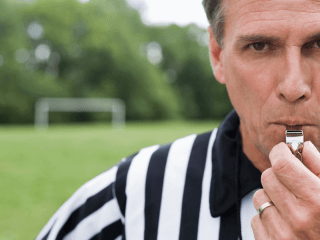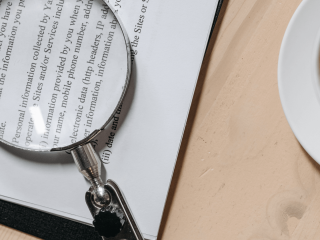Types of Plagiarism
Plagiarism is using someone else’s words or ideas without giving them proper credit. Studies show that plagiarism is rampant in high school and college, with the majority of students admitting to plagiarizing at some point during their education.
How can we stop plagiarizing and stealing other authors’ intellectual property? The first step to avoiding plagiarism is knowing what it is, and the various ways in which it shows up in writing, particularly in academic settings. Once you know the common types of plagiarism, it’s easier to avoid them in your writing.
Accidental Plagiarism
Most plagiarism isn’t intentional—when writing about similar subjects, it’s extremely easy to come up with content that’s been created before. Many of the following types of plagiarism are completely accidental.
The most common forms of accidental plagiarism include not citing sources in an essay or article, unintentional paraphrasing or quoting, and rephrasing original ideas without proper citation. However, almost every form of plagiarism can be accidental.
How to Avoid Accidental Plagiarism
The most important step to avoiding accidental plagiarism (and plagiarism of any kind) is to use a plagiarism checker before submitting your work. The next major step is to always cite all of your sources. Whether it’s a direct quote or a paraphrase of someone else’s ideas, citing the source is the safest way to avoid plagiarizing.
This is where a plagiarism checker like Quetext comes in handy. Its advanced detection technology can show you in a matter of seconds what you might have missed or where you may have unintentionally duplicated work. With Quetext, you can even generate the necessary citation right there on the spot.
Mosaic Plagiarism (Patchwork Plagiarism)
Mosaic or patchwork plagiarism is a little harder to catch than most of the other types on this list. With mosaic plagiarism, the dishonest author takes parts of sentences from a source and intersperses them with synonyms or other words. Whether it’s multiple words or certain phrases, mosaic plagiarism is still considered plagiarism, and it’s still wrong.
Examples of this type are usually intentional. Writers try to patch together their own sentences, but are clearly using another person’s words. However, with the advent of online plagiarism checkers, this kind of plagiarism is becoming easier to spot and penalize.
How to Avoid Mosaic Plagiarism
Never simply change a few words from a source to make it “your own.” Instead, write out notes on the source and make sure you understand it. When you use a source in your writing, always cite it and make sure you’re not copying words or ideas without explicitly and properly granting the credit.
Self-Plagiarism
Self-plagiarism is a form of plagiarism that isn’t often discussed, especially in higher education. Generally, self-plagiarism is when a student re-uses a paper they wrote in another class or at another time. It also occurs when an author re-publishes a previous work without crediting the original publication source.
While it doesn’t seem like using your own words is plagiarism, it is a serious offense when you are required to create original work for a class or a job. If you’re in school, it’s part of your education to create original papers.
How to Avoid Self-Plagiarism
To avoid accidentally plagiarizing yourself, simply don’t rewrite papers from high school for college classes—or even worse, papers from other college classes. If you’re required to write on the same subject in two different situations, start from scratch instead of trying to copy or rewrite parts of the original paper. While you can use the same sources and research, writing original works is essential to avoid plagiarism.
Complete Plagiarism
Complete plagiarism is the most severe form of plagiarism and results in the most intense punishments. It involves submitting an entire created work as your own when you didn’t write or contribute to it in any way.
This type of plagiarism is blatant intellectual theft and never unintentional. It’s also the least difficult form of plagiarism to find, between the availability of online plagiarism checkers and copyright laws.
How to Avoid Complete Plagiarism
Be honest, and don’t submit work that you didn’t write or contribute to as your own. Always properly cite your sources and create original work. Make sure that the attributions on your own works are complete and accurate.
Source-Based Plagiarism
Source-based plagiarism involves the misuse of source material in academic work. This type of plagiarism can occur in several ways, but the most common is when the author relies on several sources, but only credits one or some of them, which is extremely misleading and wrong.
That example of source-based plagiarism can certainly be unintentional, as could accidentally citing the wrong source in place of the one you meant to cite. However, what is never by accident is completely falsifying your sources, making them up to pretend that there was a source when there was none.
How to Avoid Source-Based Plagiarism
Cite every source you find, including the secondary sources you used to find primary information. All work viewed in the research process should be cited, even if it was only used to discover the primary source of data.
You should include all of the data in studies or experiments, whether or not it helps your main conclusion. Never fabricate any data, even if it’s in line with the data from your sources.
Direct Plagiarism
When many students think of plagiarism, direct plagiarism is what comes to mind. It involves copying someone’s exact words without citations or quotation marks. Of course, it’s tough to directly plagiarize someone’s work without getting caught, whether it’s a published author or a fellow student. It’s also essentially impossible to do by accident as, by definition, direct plagiarism is an intentional act.
Direct plagiarism in an academic paper will almost always result in an automatic score of zero. In the professional world, direct plagiarism can end in losing a job or a client. Academic honesty is not taken lightly in either situation and disciplinary action can be necessary.
How to Avoid Direct Plagiarism
Direct plagiarism is the most obvious form of plagiarism. However, it’s also the easiest to avoid. For starters, write your own papers—this is not the time or place to lean on your classmates. Always use quotation marks around direct quotes and cite every source at the end of the essay and within the text. The type of in-text citation will vary depending on the formal style, but they are always necessary.
Paraphrasing Plagiarism
Paraphrasing plagiarism is a little more difficult to spot in academic and professional writing. Instead of stealing a direct quote, the writer steals an idea by paraphrasing a quote without citations. Rewording an author’s original thought without crediting that author is just as bad as copying their exact wording and therefore punishable in academic and professional settings.
Paraphrasing plagiarism is similar to mosaic or patchwork plagiarism but is usually a more general summation of an idea than a sentence rephrasing. However, paraphrasing something that’s considered common knowledge, like universal laws of physics for example, is accepted as not plagiarism.
How to Avoid Paraphrasing Plagiarism
To prevent paraphrasing plagiarism, avoid writing content directly after looking at the source. It’s easy to accidentally plagiarize when you’re not doing proper research and are instead simply regurgitating something you’ve learned online. Plan out your essay, make an outline, and take note of all your sources carefully.
Inaccurate Authorship
When citing different sources, it’s vital to do it correctly. Everyone involved in researching, editing, or writing the source, especially in scientific studies with multiple authors and editors, needs to be appropriately credited. If this doesn’t happen, it’s considered incorrect authorship and a form of plagiarism.
Inaccurate authorship occurs when a citation doesn’t include an original author or editor. It can also happen when the work gives credit to an author or editor who didn’t work on the original source. Either way, this violates the codes of research integrity and is unacceptable in a paper.
How to Avoid Inaccurate Authorship
The easiest way to avoid this mistake is to always double-check your citations. Ensure that you are providing proper attribution that aligns with the formatting guidelines for your work and that every author and editor is correctly credited.
Final Thoughts
Whether you’re writing for high school, college, or a job, it is critical that you create original content and provide proper citations for anything not your own. The most important steps to avoid plagiarism are to research effectively and always cite your sources. Now that you know what the different types of plagiarism can look like, you can focus on writing original content without worrying that you’re stealing intellectual property.









